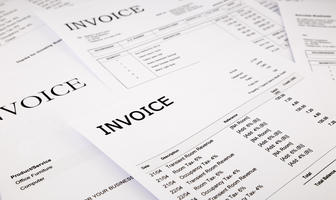What is Invoice Processing?
In a nutshell, invoice processing is the set of practices put in place by a company for the payment of the bills it incurs associated with their business. Essentially, ‘bills’ translate to invoices. This doesn’t starkly differ from that of an individual managing their personal bills and budgeting their funds to ensure they can meet their obligations and keep creditors happy to ensure they can continue to make the necessary purchases to maintain their individual lifestyle and plan for the future.
With Invoice Processing in business the primary differences is sheer volume of ‘bills’; the details toward the budget allocation; the handling of the invoice to ensure it is properly approved; and the terms of the payment to the vendor (who sent in the invoice). As the activities toward Invoice Processing to accommodate the handling are so manually intensive that specialized ‘Accounts Payable’ (AP) staff are set in place to manage the data entry and oversight of the flow of invoices. Furthermore sophisticated computerized solutions are often employed to manage these activities and reduce the manual overhead.
Good and efficient Invoice Processing is critical to the business to ensure its ultimate survival in the competitive business marketplace. Components of Invoice Processing include:
Invoice Processing Accounting:
Large business expenditures and planning of such warrant sophisticated budgetary management to ensure that monies aren’t misused and properly allocated toward their intended purpose. To manage this need budgets are broken down into different categories for which funds are allocated and charged against as invoices are received. These allocations are very specific to the line of business and require significant attention to detail. These are often broken down into accounting codes with varying multi-level breakdowns as the allocations are specifically delineated. Projects and/or tasks provide an alternative method toward these allocations.
Purchase Orders:
As part of the accounting processes purchases are frequently managed through an approval process before the expenditure is ever made. Buyers (or users wanting to make purchases) initiate a request via ‘Purchase Orders’ which identify purchase details; which accounting pot to draw from; and which vendor is targeted for the purchase. This typically travels through an approval hierarchy based on the purchase amount before it is finalized for the actual purchase. When the purchase is finally made the corresponding invoice will reference the purchase order (number typically) and processing of the invoice is streamlined as the authorizations and allocations are already in place. When associated with the PO these are routed for payment.
NON-PO (non-purchase orders):
This invoices don’t have the pre-approvals in place and all of the required processing is don’t upon receipt of the invoice. These often require routing to the requester for appropriate accounting details and acknowledgement that they approve the purchase and in many cases have received the associated items from the invoice. Upon their acknowledgement then any approvals based on the item spent must be made. Only after completion of these touchpoints is the invoice routed for payment.
Recurring Invoices:
Invoices that are associated with frequent regularly scheduled charges such as utilities are defined as Recurring invoices. They may be tied to a blanket purchase order but have the processing distinction that prompt attention to the invoice is required as service interruption may occur if not handled expeditiously.
Payment Terms:
The payment cycle of invoice processing is determined by agreements with the vendor on how quickly they want to be paid. Terminology such as ‘NET 45’ (payment is expected 45 days after receipt) are applied to reference these arrangements. Discounts may apply for processing these invoices within the prescribed timeframe.
Automation:
Invoice Processing is still heavily encumbered by paper invoices that require extensive manual intervention by members of the AP staff to key them into electronic invoices so they can be processed. Automation via Optical Character Recognition to translate these paper images and verify the values are valid against stored data greatly reduces the manual overhead of the AP staff. The OCR and automation activities though are burdened with varying invoices formats and quality which reduces the potential of a touchless invoice upon receipt.
The Premier Invoice Automation Solution – Inspyrus
Consider Inspyrus, as the premier AP automation solution. Inspyrus offers the best automation solution that can be configured to suit the broadest Invoice Processing needs in the marketplace. Their solution offers the capability to work all of the major back end financial systems: EBS, PSFT, JDE, SAP, and others, by effectively offering an abstraction of these Enterprise Resource Planning (ERP) systems with the ability to dynamically route transactions to the relevant instance, even supporting multiple instances for a single client. You won’t find many automation systems that compete in that regard. Full automation of paper and electronic invoices reduces the daily costs of invoice processing. Coupled with the a feature rich set of services that is out of the box and the configuration mechanisms built into the Inspyrus solution allows the diverse client base to match their specific business needs without costly software customizations.
So if you are talking ‘Invoice Processing’ for your business, you should have make sure you consider Inspyrus for those business needs.
Want to learn more about Invoice Automation with Inspyrus? Contact us today!
[pardot-form id=”16307″ title=”Blog – John Schleicher – What is Invoice Processing?”]

